
Try-It Diet: Macrobiotics
A two-week healthy eating plan
Adams Media, an imprint of Simon & Schuster, Inc.

Avon, Massachusetts
Contents
Introduction
A Try-It Diet is just that a diet that you can try out for two weeks to see if it is a good fit for you. Keep in mind that not every diet is right for every person; please consult with your doctor before making radical changes to your diet. More than a diet, macrobiotics is a holistic way of living that ensures everlasting peace and freedom. It is a way of living in harmony with the natural order by following the principles and laws of the universe. When your energy is balanced and harmonious, true health radiates from the inside out. Imagine having a blissful smile on your face, sparkling eyes, youthful energy, a heart full of joy and gratitude, a peaceful mind, and a free spirit.
Whatever your dream, with macrobiotics, you can create a life you truly love. Macrobiotics (macro = large or great, bios = life) is based on the Far Eastern concept of cultivating health and longevity by balancing your unique energy with the natural order. The natural order includes circulating life energy, your moods, spirit, and nature. The macrobiotic path includes eating seasonal, locally grown, and energetically balanced foods. Besides providing important nutrients, such as protein, carbohydrates, vitamins, and minerals, food is important for healthy organ and immune function and in maintaining overall energetic balance in the body. The true foundation of macrobiotics is circulating life energy, called chi in Chinese.
Chi is thought to be the force that animates and enlightens all things. Macrobiotics balances your current health condition with certain healing foods based on their chi or energy signatures, rather than solely on their nutritional content. This food may come in the form of biological foods, such as plants and animals, or elements, such as air, water, and inorganic salts. Since life is dependent on energy, your body converts chi in your food into heat or uses it for other processes. In macrobiotics, the balance of opposite but complementary forms of life energy, or chi, in the body is the foundation for good health. Everything is composed of these two complementary opposite energies: One energy is called yin and the other is called yang.
Never separate, neither energy can exist without the other. These energies are intertwined and dependent on each other, rather than antagonistic. This interconnectedness can be seen in the ancient yin/yang symbol, in which each section contains the energy of the other. Additionally, nothing is ever yin or yang alone; it is always yin or yang in relation to something else. For instance, noon is yang in relation to morning, which is more yin. However, morning is yang compared to night, which is more yin.
A balanced macrobiotic meal may include one dish or several dishes. The main goal in designing a macrobiotic meal is to create harmonious balance of all energies on the plate. These energies include color, taste, texture, flavor, and shapes of food. For example, brown rice alone is not a macrobiotic meal. The energy of brown rice is not balanced by itself. But, sprinkling roasted sesame salt (gomashio) on top balances bitter flavor with the sweetness in the rice, with the added benefit of aiding digestion.
Garnishes are also used to help balance energies in a macrobiotic meal. Pungent scallions provide yin energy to balance yang foods, such as fish (and also help dissolve oils). Although they did not intellectually understand the principles of yin and yang (macrobiotics), traditional cultures were intimately connected with the land, seasons, and cycles. They intuitively knew how to balance energies in foods. Throughout history, ancient cultures have looked to cereal grains as their main source of food. Indeed, the basis of the standard macrobiotic diet is whole grains, especially brown rice, which contains the most ideal ratio of basic nutrients for humans.
Whole grains are living foods that are intact and still contain the nutritious bran and germ portions. You know they are alive because a new plant sprouts from the seed (grain). This means that, besides being nutritious and high in fiber, this living chi increases your own vitality. Whole grains also contain complex carbohydrates (with intact fiber), which break down slowly in the body, keeping blood sugar levels steady. However, refined grains and white flour products are polished and contain only the endosperm. Besides lacking nutrients and fiber, they are composed of simple sugars, which spike blood sugar levels during digestion.
Cracked grains, like rolled oats, and whole grain flour products (whole grain bread) are also considered to have deficient energy compared to that of intact whole grains, since cracked and milled grains are no longer alive. Additionally, high heat used in the milling process even destroys the nutritional value of whole grains. Whole grain diets may reduce the risks of heart disease, some cancers, and type-2 diabetes, and may help with weight management. Relative to balanced foods, yang foods have gathering energy, which stabilizes the body and mind. These foods gather nutrients into the system, which creates strength, firmness, and hardness. The body becomes dense, solid, and grounded.
However, overconsumption of extreme yang foods, such as meat and cheese, can lead to stagnation and congestion along with rigid thinking. This condition may lead to cravings for yin foods, such as sugar, from the other extreme for balance. Compared to balanced foods, yin foods activate the body and mind. These foods release energy and nutrients into the system, which creates relaxation. The body becomes softer, lighter, and more open. Extreme yin foods, however, break down yang areas of the body.
Long time meat eaters often become attracted to raw foods, since the cooling yin nature of raw foods can help break up and disperse hard yang areas of the body. However, vegans can actually become weak on a diet solely of yin foods, since too much energy is dispersed without grounding yang energy to balance it. Overconsumption of extreme yin foods can lead to cravings for yang foods of the opposite extreme for balance. Healing foods that balance one persons energy may not work for someone else. The meal plan included in this book is just a suggestion; think of it as a collection of recipes that you can mix and match according to your own balance. Adjustments must be made to the standard macrobiotic diet based on your changing needs, including season and climate.
If youd like to explore the Macrobiotic Diet in more detail, check out The Everything Guide to Macrobiotics , available in print (ISBN: 978-1-4405-0371-9) and eBook (eISBN: 978-1-4405-0372-6) formats.
Weekly Meal Plans
Week 1
Sunday
Breakfast
Lunch
Snack
Dinner
Monday
Breakfast
Lunch
Snack
Dinner
Tuesday
Breakfast
Lunch
Snack
Dinner
Wednesday
Breakfast
Lunch
Snack
Dinner
Thursday
Breakfast
Lunch
Next page


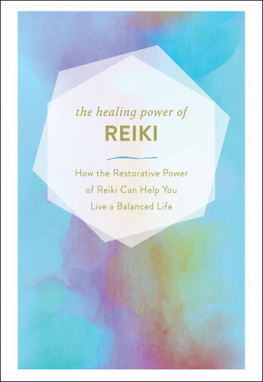
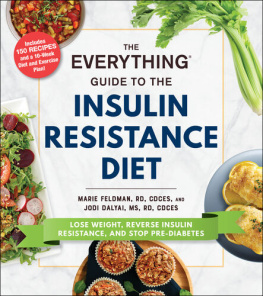


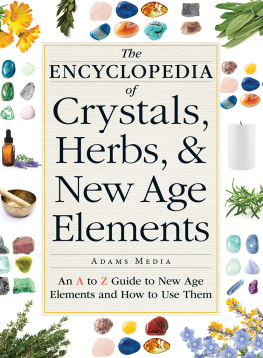
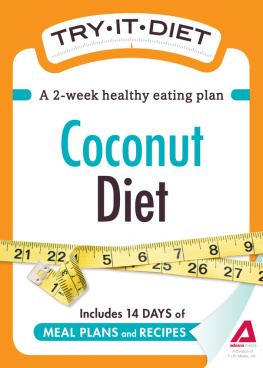


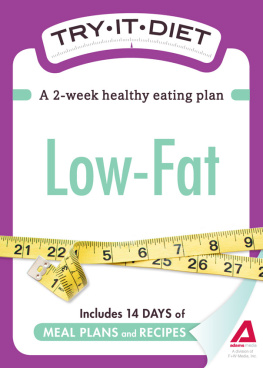
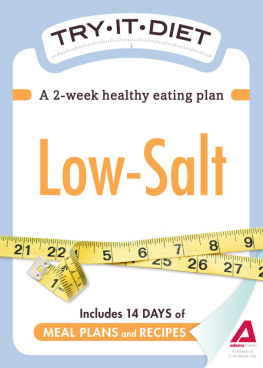
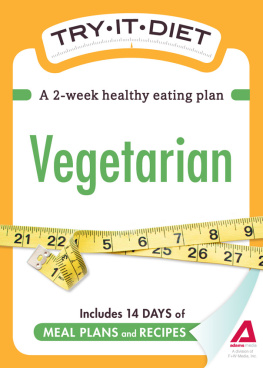
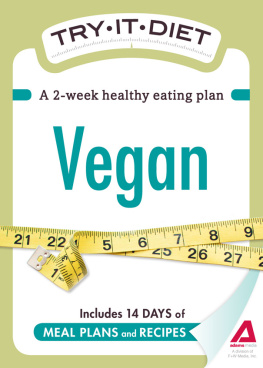




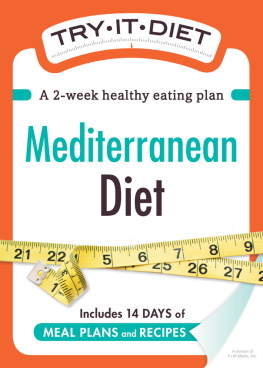

 Avon, Massachusetts
Avon, Massachusetts